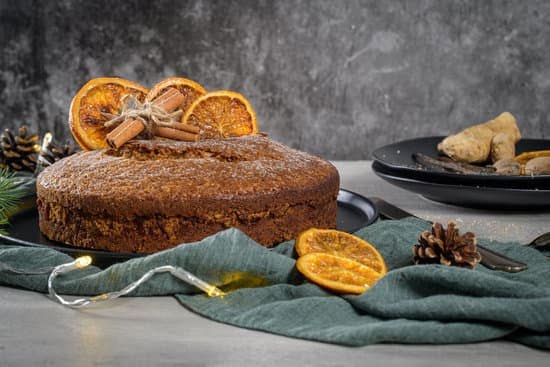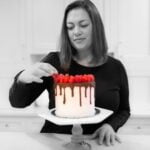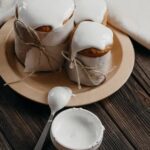Fondant is a versatile and pliable icing that has become a popular choice for cake decorating. In this article, we will explore how to make fondant for cake decorating, from the ingredients needed to step-by-step instructions and troubleshooting common issues. Whether you’re a novice baker or an experienced pastry chef, learning how to make your own fondant opens up a world of creative possibilities for customizing and embellishing your cakes.
The appeal of fondant lies in its smooth and polished appearance, making it ideal for creating intricate designs and decorations on cakes. It provides a clean canvas for applying colors, textures, and shapes, allowing bakers to bring their artistic visions to life. With the right techniques, fondant can be rolled out to cover entire cakes or molded into decorative figures and patterns.
In the following sections, we will delve into the process of making fondant from scratch, exploring the essential ingredients required and providing tips and tricks for achieving the perfect texture and consistency. Additionally, we will discuss coloring and flavoring options to customize your fondant, as well as techniques for rolling out and covering a cake with fondant.
Whether you’re new to cake decorating or looking to expand your skill set, mastering the art of making fondant opens up a world of creative possibilities in the realm of baking.
The Ingredients Needed to Make Fondant for Cake Decorating
Fondant is a popular choice for cake decorating due to its smooth and professional-looking finish. It’s a versatile and pliable icing that can be molded into various shapes, making it perfect for creating intricate designs on cakes. If you’re interested in learning how to make fondant for cake decorating, then you’ll need the following key ingredients:
To make fondant from scratch, you will need:
- Confectioners’ sugar
- Unflavored gelatin
- Water
- Glucose or corn syrup
- Glycerin
- Flavoring (such as vanilla or almond extract)
- Shortening (for greasing)
These ingredients are essential for creating a homemade fondant that is perfect for covering cakes, crafting decorations, and adding personal touches to your baked creations.
Once you have gathered all the necessary ingredients, it’s time to start preparing your homemade fondant. Here’s a step-by-step guide on how to make fondant for cake decorating:
- Bloom the gelatin by sprinkling it over cold water in a heatproof bowl.
- Heat the gelatin mixture in a microwave or double boiler until fully dissolved.
- Add glucose or corn syrup and glycerin to the gelatin mixture and mix well.
- Pour the liquid mixture over confectioners’ sugar in a large mixing bowl.
- Stir the mixture until it becomes too thick, then use your hands to knead it into a smooth dough.
By following these steps and using the listed ingredients, you can create a batch of homemade fondant that is ready to be used for decorating cakes in no time. It’s important to take your time and follow each step carefully to achieve the best results when making fondant for cake decorating.
Step-by-Step Instructions on How to Make Fondant From Scratch
Fondant is a popular choice for cake decorating due to its smooth texture and ability to create clean, polished finishes on cakes. Making fondant from scratch may seem daunting, but with the right ingredients and step-by-step instructions, you can create your own fondant at home.
To make fondant for cake decorating, you will need the following ingredients:
- 1 package (0.25 ounce) of unflavored gelatin
- 1/4 cup of cold water
- 1/2 cup of light corn syrup
- 1 tablespoon of glycerin
- 2 tablespoons of butter
- 1 teaspoon of clear vanilla extract
- 8 cups of powdered sugar
Here’s a step-by-step guide on how to make fondant from scratch:
- In a small saucepan, sprinkle the gelatin over the cold water and let it sit for a few minutes to bloom.
- Place the saucepan over low heat and stir until the gelatin is dissolved.
- Add the corn syrup, glycerin, and butter to the saucepan, stirring until the mixture is smooth.
- Remove the saucepan from heat and stir in the vanilla extract.
- In a large bowl, sift half of the powdered sugar and make a well in the center.
- Pour the liquid mixture into the well and stir until combined.
- Gradually add more powdered sugar until a dough forms.
- Knead the dough on a surface dusted with powdered sugar until it is smooth and pliable.
Once you have made your fondant from scratch following these steps, you can use it immediately to cover your cake or let it rest before using it for decorations or other elaborate designs.
The homemade fondant can be stored in an airtight container at room temperature for up to two weeks or refrigerated for longer shelf life. Just remember to bring it back to room temperature and knead it well before use.
Tips and Tricks for Getting the Perfect Texture and Consistency
Fondant is a versatile and popular choice for cake decorating due to its smooth, sleek finish and ability to be molded into various shapes and designs. One of the most important aspects of working with fondant is achieving the perfect texture and consistency. Whether you’re a beginner or an experienced baker, these tips and tricks will help you master the art of making fondant for cake decorating.
One of the key factors in achieving the perfect fondant consistency is properly measuring and adding the ingredients. You will need confectioners’ sugar, gelatin, water, glycerin, and flavoring. It’s important to follow the recipe precisely, ensuring that you use the correct measurements for each ingredient. Too much or too little of any component can affect the final consistency of your fondant.
Another tip for getting the perfect texture is to knead the fondant thoroughly. Once your fondant has come together following the recipe instructions, turn it out onto a clean work surface dusted with confectioners’ sugar. Knead it until it becomes smooth and pliable, eliminating any air bubbles along the way. Proper kneading not only ensures a uniform texture but also makes working with fondant much easier when it comes time to cover your cake or create decorations.
A common problem when making fondant is ending up with dry or sticky consistency. If your fondant turns out too dry, try kneading in a small amount of vegetable shortening until it becomes more pliable. On the other hand, if your fondant is too sticky, add confectioners’ sugar a little at a time until it reaches the desired consistency.
| Tip | Description |
|---|---|
| Proper Measurement | Follow precise measurements for each ingredient |
| Thorough Kneading | Knead until smooth and pliable to eliminate air bubbles |
| Troubleshooting Dryness or Stickiness | Add shortening for dryness; add confectioners’ sugar for stickiness |
Coloring and Flavoring Options for Customizing Your Fondant
Coloring and flavoring your fondant opens up a world of possibilities for personalizing your cake decorating projects. From traditional vanilla flavor to vibrant rainbow colors, here’s how you can make your fondant unique and delicious.
Choosing Flavors
When it comes to flavoring your fondant, the options are endless. You can stick with classic vanilla for a subtle, sweet taste, or experiment with different extracts like almond, lemon, or even coconut for a more unique flavor profile. Some bakers even use flavored syrups or liqueurs to add an extra kick to their fondant. Just be sure to start with small amounts and taste as you go to avoid overpowering the natural sweetness of the fondant.
Adding Color
For adding color to your fondant, gel food coloring is the best choice as it won’t change the consistency of the fondant. Start with a small amount of coloring and knead it into your fondant until you reach your desired shade. Remember that the color will darken slightly as the fondant sits, so go easy on the coloring at first. Consider mixing different colors together to create custom shades for your cakes.
Creating Custom Combinations
Mixing flavors and colors is a fun way to experiment and create truly unique fondant creations. For example, combine a dash of raspberry extract with pink food coloring for a fruity pink fondant, or mix almond extract with green food coloring for a refreshing mint-flavored green fondant. The possibilities are endless when it comes to customizing your fondant for cake decorating.
By experimenting with different flavors and colors, you can take your cake decorating skills to new heights and create stunning confections that look and taste amazing.
Rolling Out and Covering a Cake With Fondant
Once you have successfully made your fondant, the next step is to roll it out and cover your cake with it. This process requires precision and patience to ensure a smooth and flawless finish.
Preparing the Cake
Before rolling out the fondant, make sure that your cake is properly prepared. It should be freshly baked, cooled, and frosted with a thin layer of buttercream or ganache. This will provide a smooth surface for the fondant to adhere to.
Rollling Out the Fondant
To start, dust your work surface with powdered sugar to prevent the fondant from sticking. Knead the fondant until it becomes pliable and roll it into a smooth ball. Then, use a rolling pin to roll out the fondant into a circle large enough to cover your cake completely.
Covering the Cake
Gently lift the rolled-out fondant using your rolling pin and drape it over the cake. Carefully smooth out any air bubbles or wrinkles by using a fondant smoother or by gently patting it with your hands. Trim off any excess fondant from the bottom of the cake using a sharp knife.
By following these steps, you can achieve a beautifully covered cake with fondant that will impress your friends and family at any special occasion.
How to Make Fondant Decorations for Cake Embellishment
Fondant decorations are a great way to add an extra special touch to your cake creations. From intricate flowers and figures to simple shapes and patterns, fondant allows for endless possibilities when it comes to decorating a cake. Making your own fondant decorations may seem daunting at first, but with the right techniques and a bit of practice, you can create stunning embellishments to take your cakes to the next level.
To make fondant decorations for cake embellishment, you will need a few key tools and ingredients. First, you will need your homemade or store-bought fondant.
You will also need food coloring gels or powders for tinting the fondant in the desired colors, as well as some powdered sugar for dusting your work surface and preventing sticking. Additionally, having small shaping tools, such as fondant cutters or silicone molds, can be helpful in creating different shapes and designs for your decorations.
When making fondant decorations, it is important to ensure that your fondant is rolled out to the right thickness. For intricate details, rolling out the fondant thinner is ideal, while for larger shapes like bows or ribbons, a slightly thicker layer of fondant may be needed. It’s also important to keep your work surface clean and free of any excess powdered sugar or cornstarch that could affect the texture of the fondant.
Once you have rolled out your fondant and cut out or molded your desired shapes, allow them to dry and set before placing them on your cake. This will ensure that they hold their shape and do not droop or lose definition once applied. With a little practice and patience, you can create beautiful fondant decorations to adorn your cakes and impress everyone with your cake decorating skills.
Troubleshooting Common Issues When Making Fondant for Cake Decorating
When making fondant for cake decorating, it’s not uncommon to run into some issues along the way. Whether you’re a beginner or an experienced baker, troubleshooting common problems can help ensure that your fondant turns out perfect every time. Here are some common issues that may arise when making fondant for cake decorating and how to address them.
One common problem when making fondant is the texture being too dry or too sticky. If your fondant is too dry, try kneading in small amounts of shortening or glycerin to add moisture back in. On the other hand, if your fondant is too sticky, try adding more powdered sugar while kneading until you reach the desired consistency.
Another issue that may occur is air bubbles forming within the fondant. To prevent this, make sure to properly knead and roll out the fondant to release any trapped air. You can also use a pin to gently prick any air bubbles that appear on the surface of the fondant after it has been placed on the cake.
Finally, if you find that your fondant is tearing or cracking as you try to cover the cake, it may be too dry or rolled out too thin. Adding a small amount of shortening while kneading can help soften the fondant and prevent cracking. Additionally, rolling out the fondant to just the right thickness can make all the difference when covering a cake.
By understanding how to troubleshoot these common issues when making fondant for cake decorating, you’ll be better equipped to create beautiful and professional-looking cakes every time. Remember that practice makes perfect, so don’t be discouraged if it takes a few tries to get it just right. With patience and persistence, you’ll master the art of working with fondant in no time.
Conclusion
In conclusion, learning how to make fondant for cake decorating opens up a world of creative possibilities for embellishing your baked creations. Once you have mastered the art of making this versatile and pliable icing, you can customize it with different colors and flavors to match any theme or taste.
Whether you’re covering a cake with a smooth finish, crafting intricate decorations, or adding unique textures, fondant offers endless opportunities to take your cake decorating skills to the next level.
As you experiment with making and using fondant, remember that practice makes perfect. Don’t be discouraged if your first attempts don’t turn out exactly as planned – troubleshooting common issues and adjusting your technique will help you achieve the ideal texture and consistency. With time and experience, you’ll become more adept at working with fondant, and soon enough, you’ll be effortlessly creating professional-looking cakes that are sure to impress.
In the end, the key to successfully incorporating fondant into your cake decorating repertoire is patience and creativity. With a willingness to learn and explore new techniques, as well as an open mind for experimentation, you’ll find that fondant can elevate your baked goods from ordinary to extraordinary. So go ahead and dive into the world of fondant – who knows what amazing designs and decorations you’ll create.
Frequently Asked Questions
What Ingredients Is Fondant Made Of?
Fondant is typically made of sugar, water, glucose, and gelatin. These ingredients are combined to create a smooth, pliable dough that can be rolled out and used to cover cakes or make decorations.
How to Make Fondant Decorations for a Cake?
To make fondant decorations for a cake, you will need to start by coloring your fondant with food coloring. Then, roll out the fondant to the desired thickness and use cookie cutters or fondant molds to create shapes. Allow the decorations to dry before placing them on the cake.
What Is a Good Substitute for Fondant?
A good substitute for fondant is modeling chocolate. It has a similar texture and can be molded and shaped just like fondant. Another alternative is marzipan, which is made from ground almonds and sugar. Both of these options can be used as a delicious and decorative covering for cakes.

Welcome to our cake decorating blog! My name is Destiny Flores, and I am the proud owner of a cake decorating business named Cake Karma. Our mission is to provide delicious, beautiful cakes for all occasions. We specialize in creating custom cakes that are tailored specifically to each customer’s individual needs and tastes.





